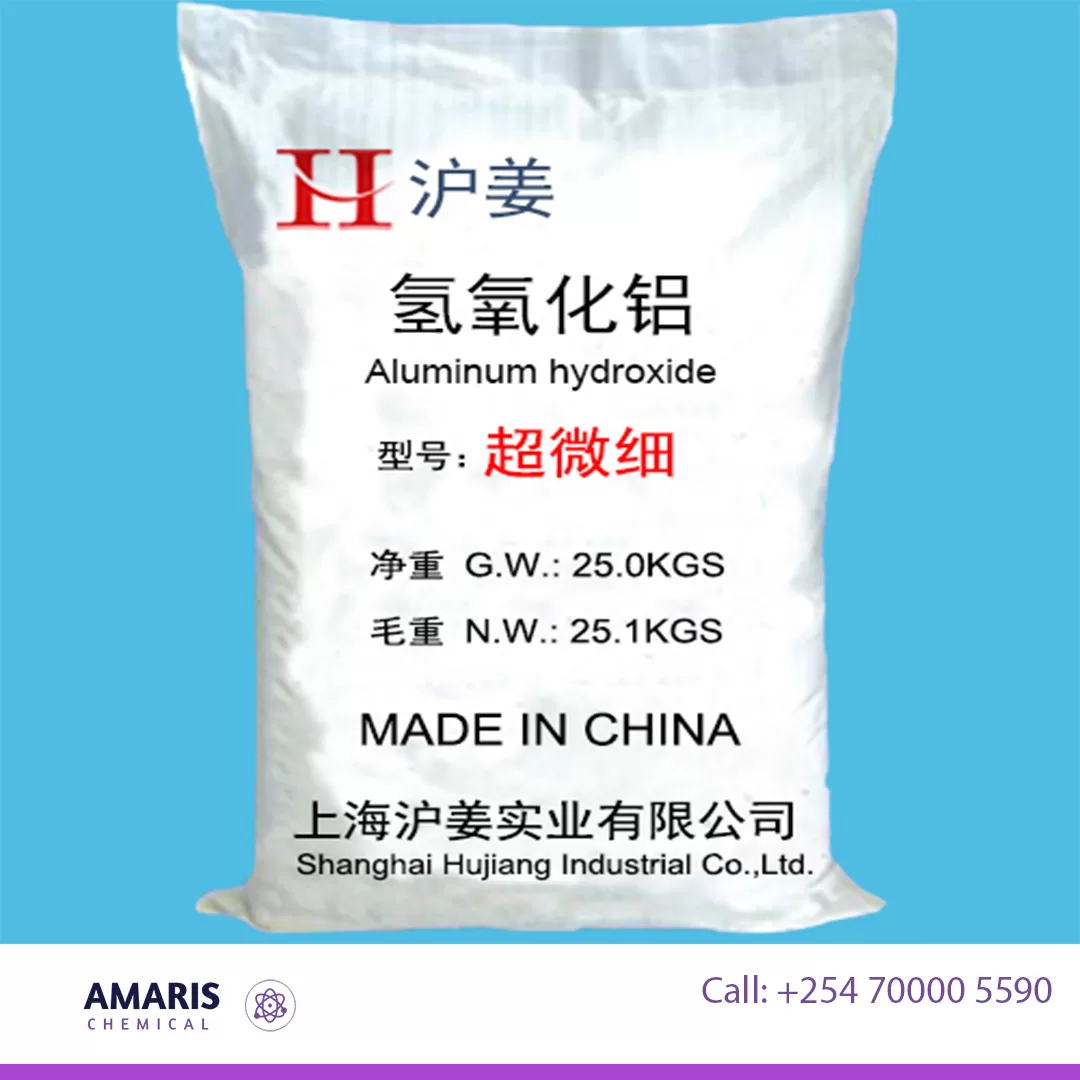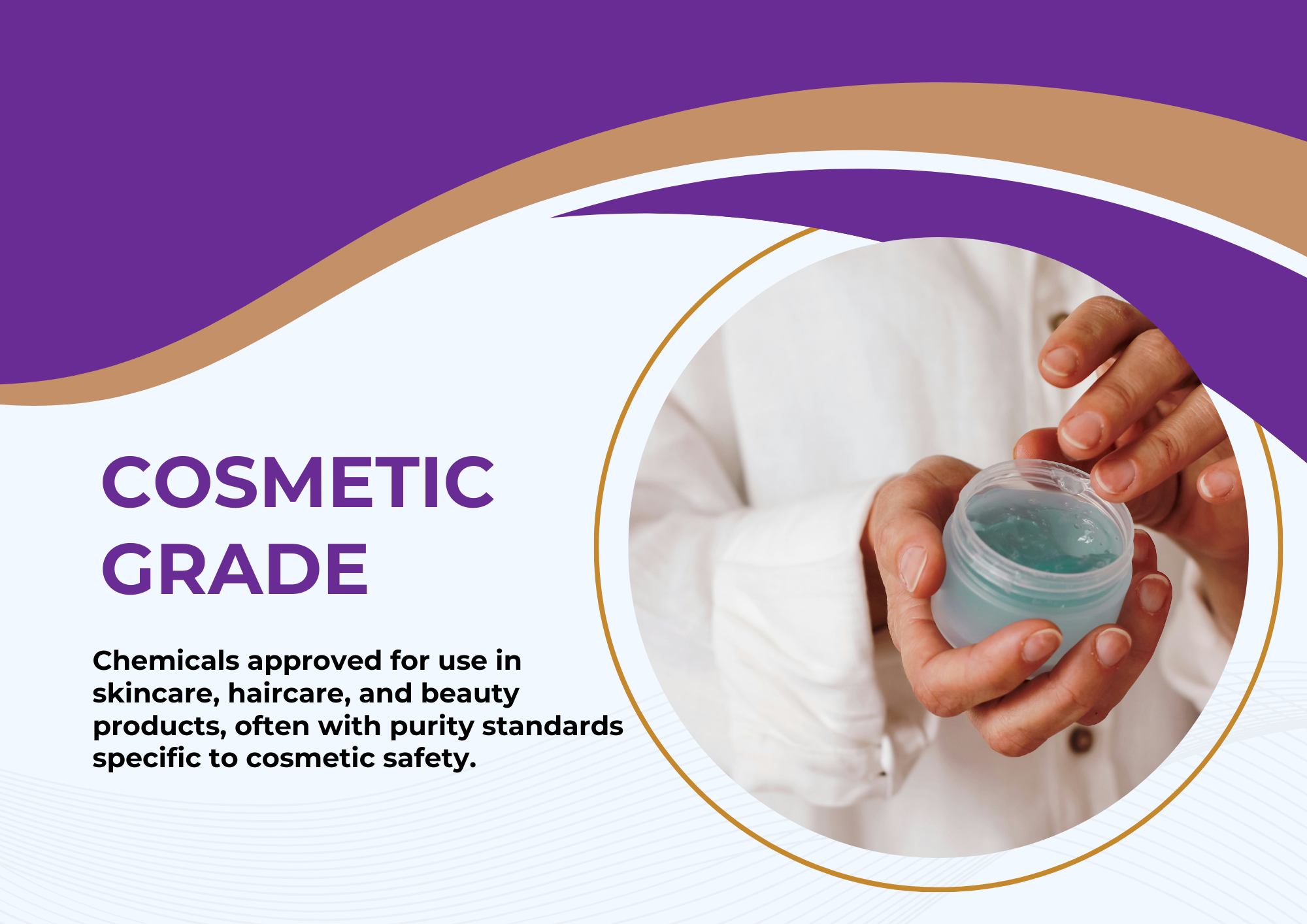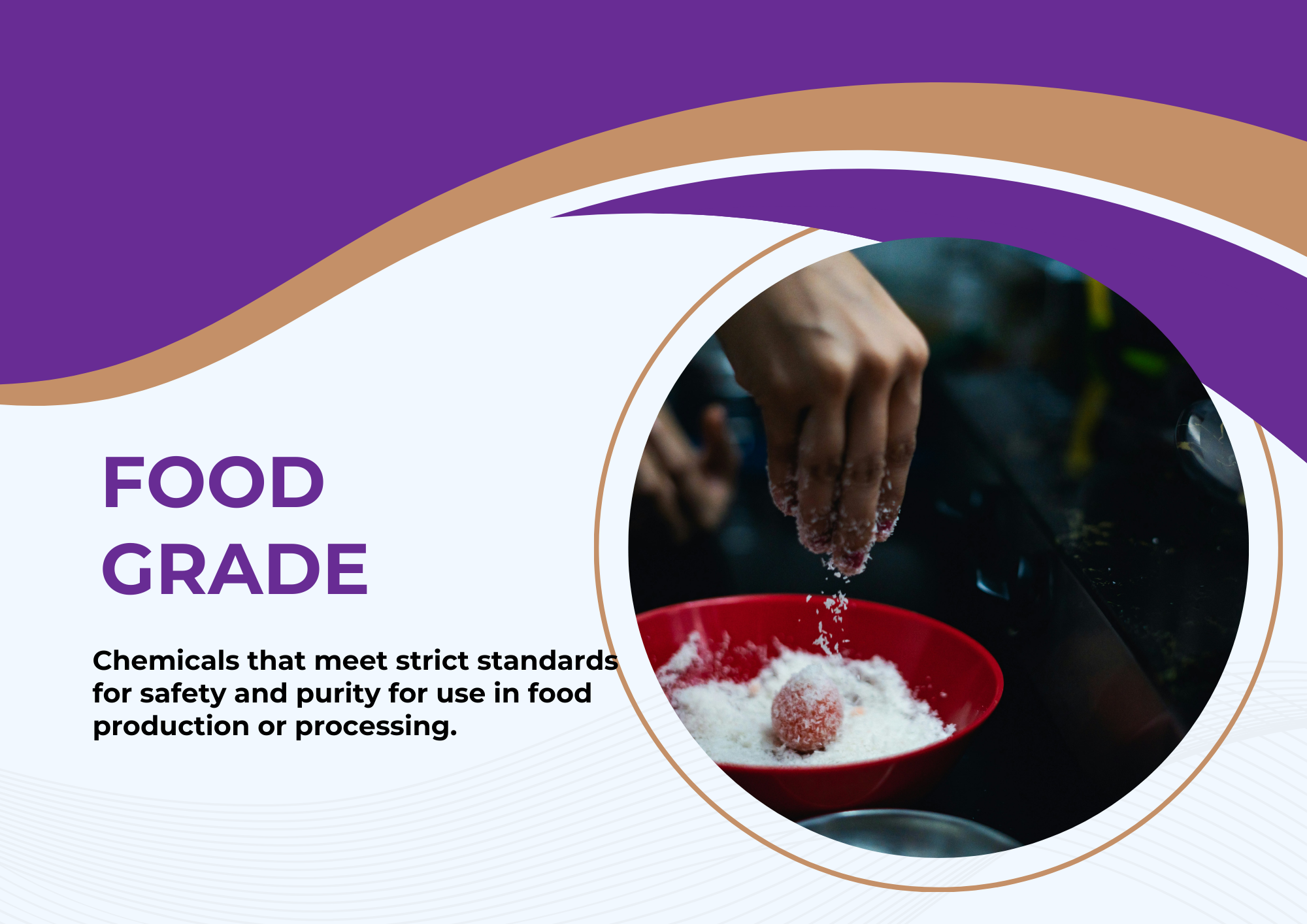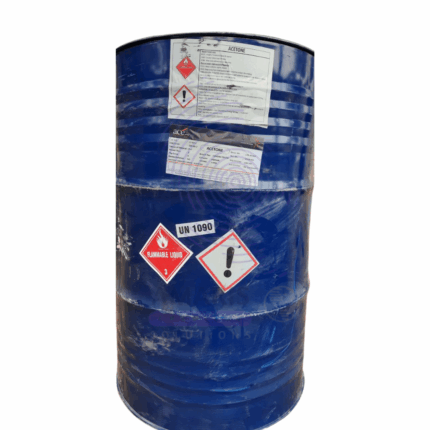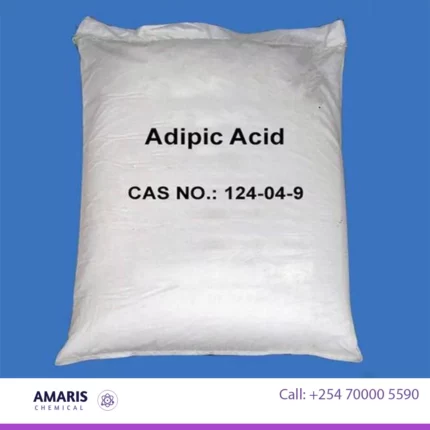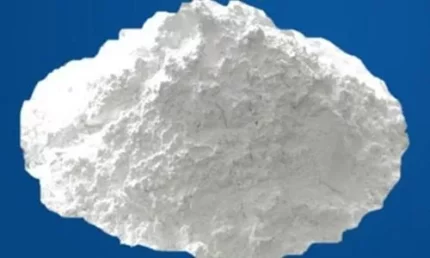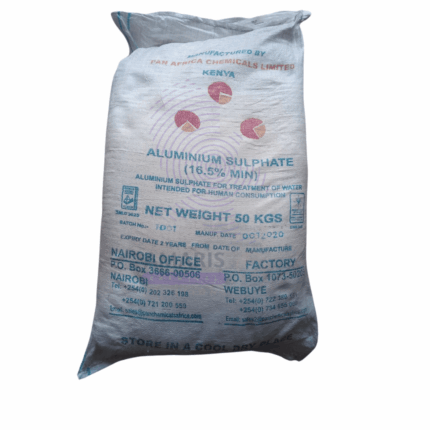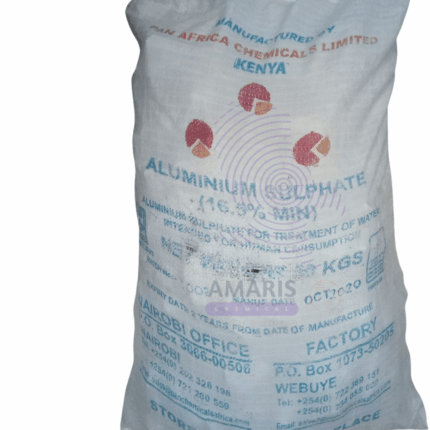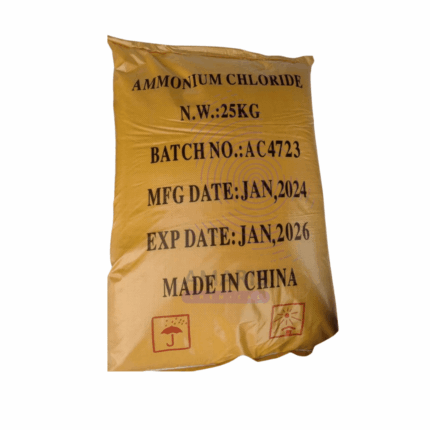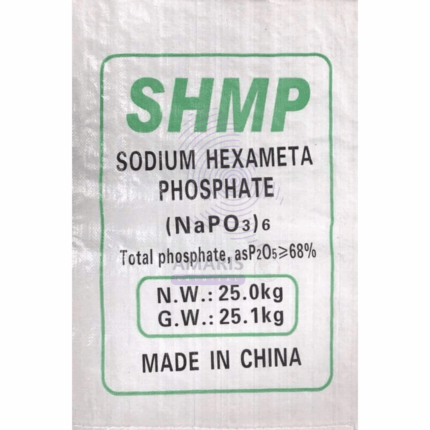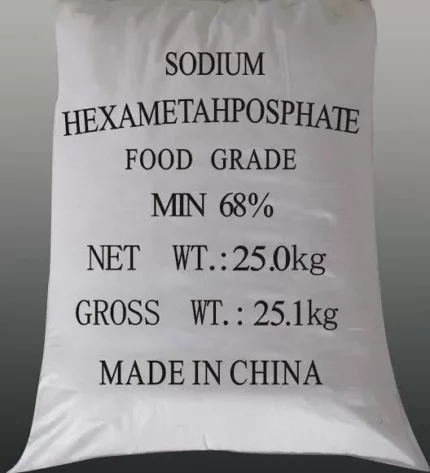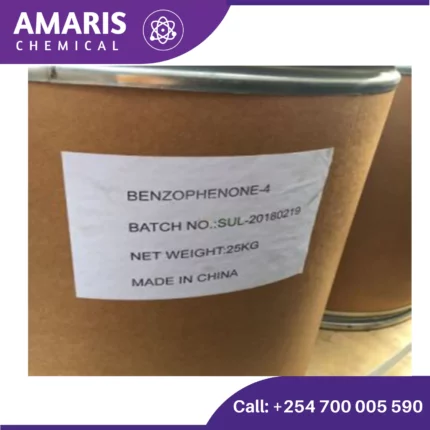
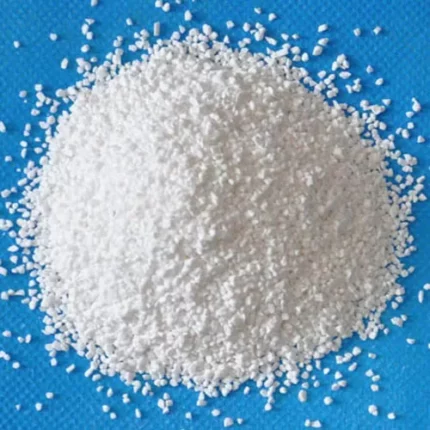
Aluminium hydroxide
$5,500.00 Original price was: $5,500.00.$5,400.00Current price is: $5,400.00.
Aluminium hydroxide is a chemical compound with the formula Al(OH)3. It is an inorganic compound that is commonly used as an antacid to neutralize excess stomach acid, as well as a component in the manufacture of various products, such as ceramics, paper, and cosmetics. It is a white, powdery substance that is insoluble in water and has a low toxicity. When heated, it decomposes to produce aluminium oxide, or alumina, which is used in the production of aluminium metal.
Aluminium hydroxide Uses
- Antacid: Aluminium hydroxide is commonly used as an antacid to neutralize excess stomach acid and provide relief from heartburn, indigestion, and stomach ulcers.
- Water treatment: Aluminium hydroxide is used in water treatment processes to remove impurities and improve the clarity and safety of drinking water.
- Flame retardant: Aluminium hydroxide is used as a flame retardant in plastics, rubber, and textiles, as it releases water vapor when heated, which helps to cool and extinguish flames.
- Filler: Aluminium hydroxide is used as a filler in a variety of materials, including paper, ceramics, and paint, to improve their properties and performance.
- Catalyst: Aluminium hydroxide is used as a catalyst in chemical reactions, particularly in the production of polyolefins, which are used to make a wide range of plastic products.
- Pharmaceutical: Aluminium hydroxide is used as an excipient in pharmaceutical formulations, such as vaccines and antacids, to enhance their stability and effectiveness.
Cosmetics: Aluminium hydroxide is used in cosmetics and personal care products, such as deodorants and antiperspirants, as an absorbent and as a thickening agent.
| APPEARANCE |
Powdery – Fine, dry particles e.g., baking soda |
|---|---|
| COUNTRIES OF ORIGIN |
CHINA |
1. Basic Identification Attributes
- Chemical Name:
- IUPAC: Aluminium hydroxide
- Common/Trade Names: Hydrated alumina, Alumina trihydrate (ATH), Aluminic acid
- CAS Number: 21645-51-2
- HS Code: 2818.30.00 (Hydroxides of aluminium)
- Molecular Formula: Al(OH)₃ or Al₂O₃·3H₂O
- Synonyms: Aluminum trihydroxide, Gibbsite (mineral form), ATH flame retardant
2. Physical & Chemical Properties
- Physical State: White amorphous powder or crystalline solid
- Color & Odor: White; odorless
- Boiling Point: Decomposes at ~300°C (loses water to form Al₂O₃)
- Melting Point: None (thermally decomposes)
- Density/Specific Gravity: 2.42 g/cm³
- Solubility:
- Water: Practically insoluble (0.0001 g/100 mL at 20°C)
- Acids/Bases: Soluble in strong acids and bases
- pH Level: 7-8 (slightly basic suspension)
- Vapor Pressure: Negligible
- Flash Point: Non-flammable
- Autoignition Temperature: Not applicable
- Viscosity: Not applicable (powder)
3. Safety & Hazard Attributes
- Hazard Class (GHS):
- Not classified as hazardous (most forms)
- May be labeled as STOT RE 2 (H373) in dust form for prolonged inhalation
- NFPA Ratings:
- Health: 1 | Flammability: 0 | Reactivity: 0
- Exposure Limits:
- OSHA PEL: 15 mg/m³ (total dust), 5 mg/m³ (respirable fraction)
- ACGIH TLV: 1 mg/m³ (respirable dust)
- Reactivity:
- Stable under normal conditions
- Reacts with strong acids/bases
- Decomposes to alumina at high temperatures
4. Storage & Handling Attributes
- Storage Conditions:
- Cool, dry place
- Keep containers tightly closed
- Incompatible Materials: Strong acids, strong bases
- Container Type: Polyethylene bags, fiber drums
- Shelf Life: Indefinite if stored properly
- Special Handling:
- Dust masks recommended for powder handling
- Normal protective equipment (gloves, goggles)
5. Regulatory & Compliance Attributes
- Regulatory Status:
- EPA: Listed on TSCA Inventory
- REACH: Registered
- FDA: Approved as indirect food additive
- Hazard Symbols (GHS): None (non-hazardous form)
- Transportation Restrictions:
- Not regulated for most forms
- Dust may be classified as UN 3077 (Environmentally hazardous)
- Waste Disposal:
- Non-hazardous waste in most jurisdictions
- Landfill disposal acceptable
6. Environmental & Health Impact
- Ecotoxicity:
- Practically non-toxic to aquatic organisms
- Persistence:
- Naturally occurs as mineral gibbsite
- Converts to alumina in environment
- Carcinogenicity/Mutagenicity:
- IARC: Not classified
- OSHA: Not considered carcinogenic
- Biodegradability: Not biodegradable but environmentally benign
Personal Protective Equipment (PPE)
- Respiratory Protection:
- Use a dust mask (NIOSH N95 or higher)if handling powder in poorly ventilated areas.
- Eye Protection:
- Wear safety gogglesto prevent eye irritation.
- Skin Protection:
- Use gloves (nitrile or latex)to avoid skin contact.
- Clothing:
- Wear lab coats or protective clothingto minimize dust exposure.
Handling & Storage
- Avoid creating dust clouds(use wet methods or local exhaust ventilation).
- Store in a cool, dry placeaway from strong acids (can react to release heat and gases).
- Keep containers tightly closedto prevent moisture absorption.
- Do not mix with strong acids or oxidizers(risk of reaction).
Workplace Controls
- Ensure good ventilationin work areas.
- Use spill containment measuresto prevent environmental release.
- Label containers clearlyto avoid misuse.
Inhalation (Dust Exposure)
- Move to fresh air
- If breathing difficulties occur, seek medical attention.
Skin Contact
- Wash affected area with soap and water.
- If irritation persists, consult a doctor.
Eye Contact
- Rinse eyes with lukewarm water for at least 15 minutes, holding eyelids open.
- Seek medical attentionif irritation continues.
Ingestion
- Do NOT induce vomiting.
- Rinse mouth and drink water or milkif conscious.
- Seek medical advice, though toxicity is low.
Suitable Extinguishing Agents
- Water spray, foam, CO₂, or dry chemical extinguishers(standard firefighting methods).
Hazardous Decomposition Products
- If heated above 180°C (356°F), it releases water vapor and aluminium oxide (Al₂O₃).
- No toxic fumes, but decomposition may produce dust particles—use respiratory protection if near fire.
Special Firefighting Procedures
- Wear self-contained breathing apparatus (SCBA)if large quantities are involved.
- Cool containers with waterto prevent pressure buildup.
Spill Cleanup:
- Wear PPE (gloves, mask, goggles).
- Sweep or vacuum (with HEPA filter) to avoid dust dispersion.
- Dispose of waste according to local regulations

